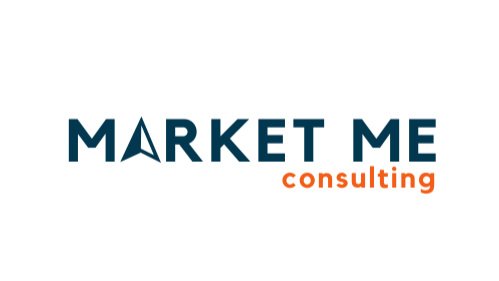Top Strategies to Diversify Your Nonprofit’s Fundraising
Your Guide to Growing Your Nonprofit’s Revenue
For many nonprofits, government grants provide a crucial source of funding. However, relying too heavily on these grants can leave organizations vulnerable to budget cuts, policy changes, and shifting priorities. Nonprofits must diversify their revenue streams to build a more resilient and sustainable funding base.
In this blog post, we’ll explore several strategies nonprofits can use to diversify their fundraising, including online fundraising, monthly donor programs, middle-donor programs, corporate giving, and strategic campaigns.
1. Online Fundraising: Expanding Your Digital Presence
Online fundraising has become vital for nonprofits looking to reach new donors and engage existing supporters. A strong digital strategy can significantly expand your fundraising potential.
Key Online Fundraising Strategies:
Optimized Donation Pages: Ensure your website features a well-designed, mobile-friendly donation page with clear calls to action and multiple payment options.
Peer-to-Peer Fundraising: Empower supporters to fundraise on your behalf through platforms like Facebook Fundraisers, GoFundMe, or dedicated peer-to-peer tools.
Crowdfunding Campaigns: Launch time-sensitive fundraising campaigns with compelling stories and urgent calls to action to attract new donors.
Email Fundraising: Build and segment your email list to personalize donation appeals and nurture donor relationships over time.
Social Media Fundraising: Leverage social media platforms to promote fundraising campaigns, encourage sharing, and integrate donation buttons directly into platforms like Instagram and Facebook.
By strategically incorporating online fundraising tactics, your nonprofit can increase donor engagement and reach a wider audience beyond its traditional networks.
2. Monthly Donor Programs: Building Sustainable Revenue
One of the most effective ways to create a reliable funding stream is through a monthly donor program. Recurring donations provide predictable revenue that helps with long-term planning and financial stability.
How to Grow a Monthly Donor Program:
Offer Different Giving Levels: Provide multiple tiers for donors to choose from, making it accessible for supporters at all financial levels.
Use Impact-Driven Messaging: Show how a donor’s monthly contribution directly supports your mission. For example, “$25 per month provides school supplies for one child for a year.”
Make It Easy: Streamline the signup process by using simple, user-friendly forms and automated payment processing.
Recognize and Appreciate Donors: Create exclusive donor benefits, such as behind-the-scenes updates, quarterly impact reports, or special recognition events.
Leverage Matching Gifts: Encourage donors to double their impact by checking if their employer offers a matching gift program.
A well-designed monthly giving program increases donor retention and creates a steady stream of unrestricted funding.
3. Middle-Donor Programs: Engaging Mid-Level Supporters
Many nonprofits focus on acquiring small donors and securing major gifts, but mid-level donors (often giving between $500–$5,000 annually) are a largely untapped opportunity. Engaging this group can significantly boost revenue and create a pipeline for future major donors.
How to Cultivate Middle Donors:
Identify High-Engagement Donors: Look at your database to find donors who give regularly but have not yet moved into major gift territory.
Create Exclusive Opportunities: Offer insider experiences, personalized impact reports, or invitations to VIP events.
Personalize Communications: Unlike small-dollar donors, mid-level donors appreciate more tailored outreach. Send personalized thank-you notes, calls, and emails.
Develop a Relationship-Focused Strategy: Assign a staff member or board member to steward mid-level donors and deepen engagement personally.
When nurtured correctly, middle donors represent a key segment that can become major donors over time.
4. Corporate Giving: Partnering with Businesses
Businesses increasingly seek to partner with nonprofits that align with their values and social responsibility goals. Corporate giving provides nonprofits with financial support while also strengthening community engagement.
Ways to Secure Corporate Support:
Corporate Sponsorships: Seek sponsorships for events, programs, or initiatives where businesses can showcase their social impact.
Employee Giving Programs: Encourage businesses to implement payroll deduction programs or match employee donations.
Cause Marketing Partnerships: Collaborate with companies to create cause-based promotions, where a percentage of sales goes to your nonprofit.
In-Kind Donations: Request goods or services from businesses that align with your nonprofit’s needs, such as office supplies, technology, or professional services.
Volunteer Engagement: Encourage corporate employees to volunteer, which can lead to deeper engagement and financial contributions.
Building strong corporate relationships can create sustainable, long-term funding opportunities for your nonprofit.
5. Campaign-Based Fundraising: Creating Urgency & Engagement
Fundraising campaigns like GivingTuesday are a great way to rally supporters around a specific goal. Whether it’s an annual giving campaign, a capital campaign, or an emergency response initiative, well-executed campaigns can bring in significant funding.
Best Practices for Running a Successful Fundraising Campaign:
Set Clear Goals: Define a fundraising target and explain what the funds will support.
Use a Multichannel Approach: Promote your campaign through email, social media, direct mail, and events to maximize reach.
Create a Sense of Urgency: Implement time-sensitive appeals to encourage donors to act quickly.
Engage Major Donors Early: Secure leadership gifts at the start to create momentum and inspire other donors to contribute.
Showcase Impact Stories: Use compelling storytelling and testimonials to connect donors emotionally to the cause.
Recognize and Celebrate Success: Publicly acknowledge donors and share campaign milestones to maintain engagement and build excitement.
By planning strategic fundraising campaigns throughout the year, nonprofits can attract both new and existing donors while boosting overall revenue.
Final Thoughts: A Holistic Approach to Diversified Fundraising
Nonprofits that diversify their fundraising strategies are better positioned to weather financial uncertainties and grow their impact. Instead of relying solely on government grants, organizations should embrace online fundraising, monthly donor programs, mid-level donor engagement, corporate partnerships, and well-planned campaigns to build a more sustainable funding model.
By implementing these strategies, your nonprofit can increase financial stability, deepen donor relationships, and ultimately expand your mission’s reach.
What strategies have worked for your nonprofit? Share your experiences in the comments below!
Conclusion
At Market Me Consulting, we are committed to helping nonprofits craft nonprofit fundraising strategies that resonate with their audiences and drive results.
Check out our other blog articles for marketing and fundraising best practices and tips.
Contact us today to learn how we can support your nonprofit’s marketing and fundraising efforts.
